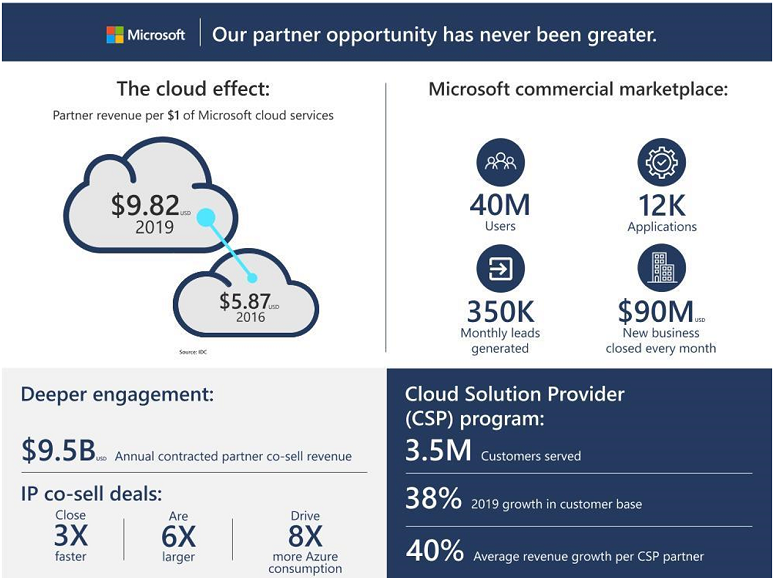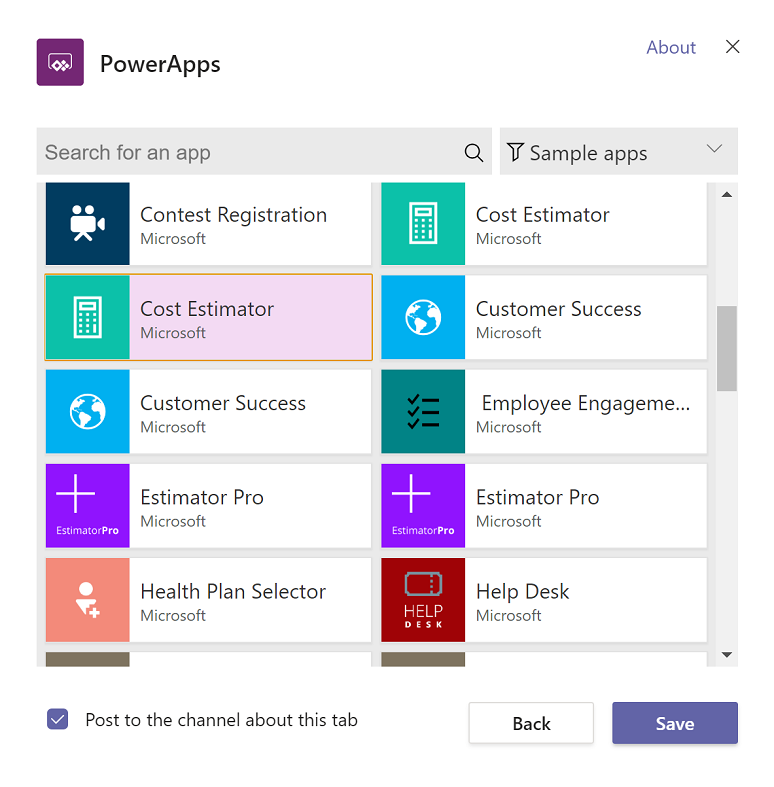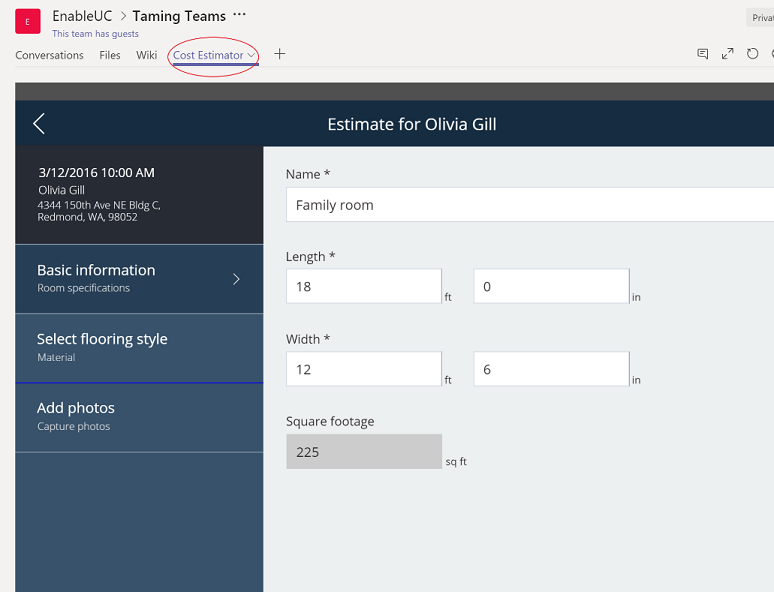This week in Las Vegas, Microsoft brings together partners from more than 130 countries for its five-day annual
Inspire conference, with a goal of helping them drive greater revenue, profitability, and overall business success by leveraging its tools.
With the continued move of more services to the cloud, many partners’ premises-oriented architecture, design, and implementation businesses are disrupted. In response, Microsoft is fully pushing the cloud effect multiplier at this partner conference. Specifically, according to Microsoft, for every $1 of Microsoft cloud services sold, a partner drives $9.82 of revenue, almost a 10x multiplier.
To drive home the revenue implications, Microsoft highlights its 38% growth in customer base associated with the cloud solution provider program. This includes monthly figures of 350,000 leads generated and $90 million of new closed business.
This 10x cloud effect multiplier bests previously reported multipliers:
- In 2018 Microsoft noted that partners earned $9.64 per $1 of Microsoft revenue.
- In 2017 Microsoft highlighted that partners earned $9.01 per $1 of Microsoft revenue.
- According to the new infographic above, in 2016 only $5.87 of partner revenue was associated with each $1 of Microsoft cloud revenue. Takeaway: In 2016 Microsoft and its partners were still significantly invested in on-premises solutions.
- In 2009 Microsoft partners were earning $8.70 per $1 of Microsoft revenue, according to a similar IDC study. It’s safe to assume that most of this revenue was from on-premises solutions.
Microsoft
PowerApps, which is part of what Microsoft is now calling the
Power Platform (along with Power BI and Microsoft Flow) allows you to build no-code or low-code applications that work inside of Teams. (The Power Platform is, in turn, part of the larger
Dynamics 365 brand, which includes pre-built applications, a common data model, AI, and the tools to customize and extend specialized business applications.)
PowerApps allows you to create applications by dragging and dropping elements onto a canvas, just as you would design a slide in PowerPoint, and then use Excel-like expressions for the application logic and working with data. Alternatively, you can create a model-driven application by specifying what business data you need to manage. Unlike canvas applications, in which you have complete control of the app interface, much of the layout for model-driven apps is determined by the components you choose to add to the application.
And while PowerApps allows anyone to create applications without coding, developers can use code to extend both canvas and model-driven apps.
A completed PowerApp that’s added to a Teams channel will show up as a tab.
In addition, PowerApps are
shareable with other members of your Team (under administrator control).
Partners can take advantage of PowerApps along with
Power BI to create embedded Teams capabilities that capitalize on existing and new features being highlighted at Inspire 2019:
- ISV Studio -- a new tool to give independent software vendors (ISVs) better insights into how their customers are operating and using apps
- A new Business Applications ISV Connect program -- designed to help ISVs get solutions to market faster, simplify publishing, and promote their solutions with customers
- New APIs, business logic, entities, and workflows for Dynamics 365 and PowerApps -- enable ISVs to connect line-of-business apps to core business data without having to build new integration points
- New Industry accelerators for the automotive and financial services market along with enhancements to the non-profit accelerator -- these pre-built data models align and validate with specific vertical markets to help partners more rapidly deliver value to customers
- New monetization models associated with Microsoft’s app store -- includes a new Marketplace Rewards program that allows publishers to unlock sales, marketing, and technical benefits as their businesses grow
- New Azure capabilities -- includes enhanced Azure Data Lake capabilities and a new Azure Data Share service
- A new Azure AI Accelerate Program -- to help partners bring AI solutions and capabilities to market faster
According to Microsoft’s internal research, by 2022, the business applications market will reach $125 billion, up 43% from 2018, with ISVs projected to drive 57% of the business applications business. Teams, as Microsoft’s declared “hub for teamwork,” certainly provides new revenue opportunities for forward-thinking partners.
If you want to consider being “Inspired,” you can
watch select Inspire keynotes live and on-demand. Notably, on Wednesday, July 17, at 8:30 a.m. PT, tune in for Microsoft CEO Satya Nadella and President Brad Smith.
Microsoft Teams enables new partner opportunities but also brings with it new obstacles and pitfalls. If you have questions related to this article please comment below, tweet @kkieller, or message me on LinkedIn.













